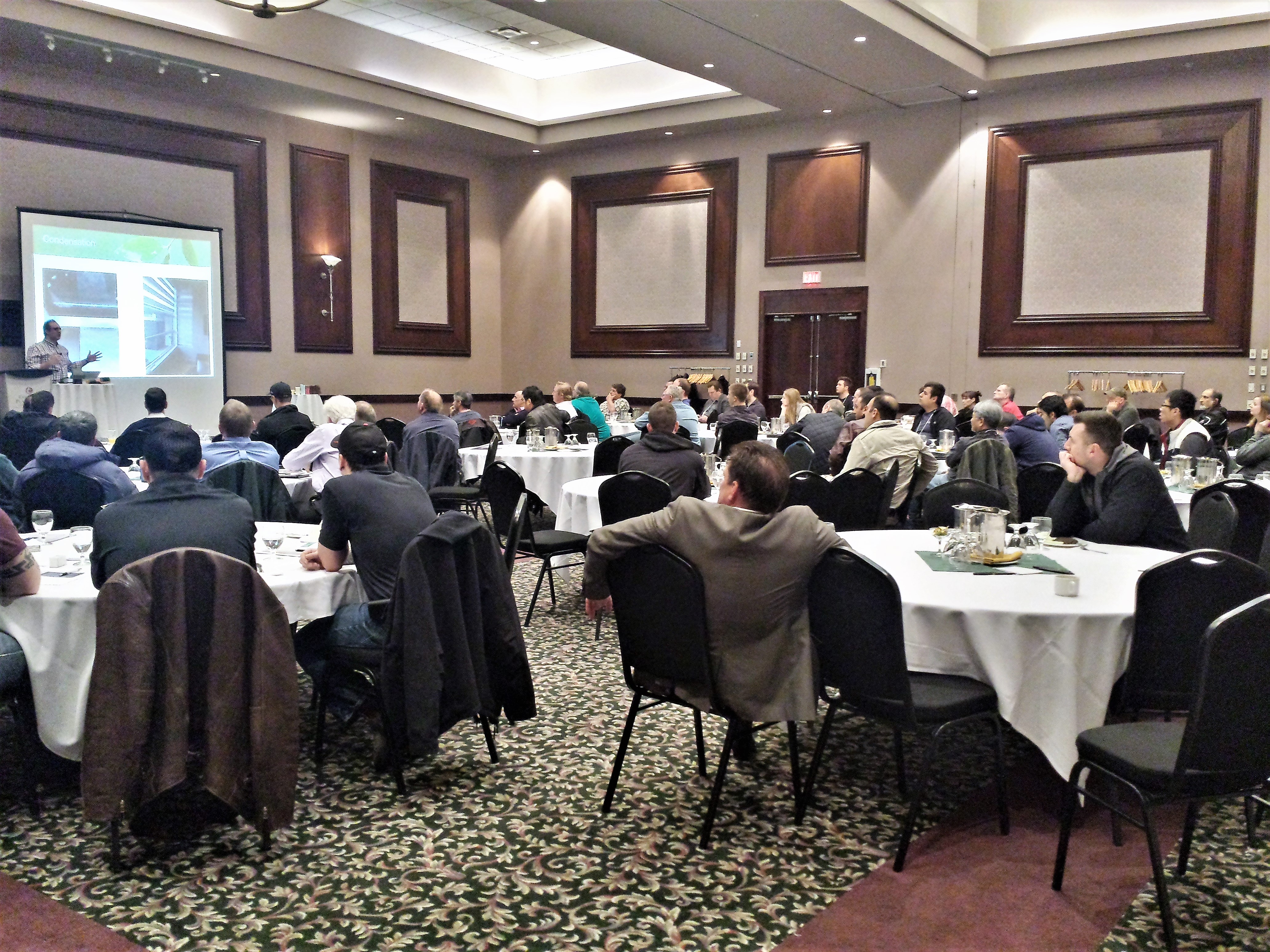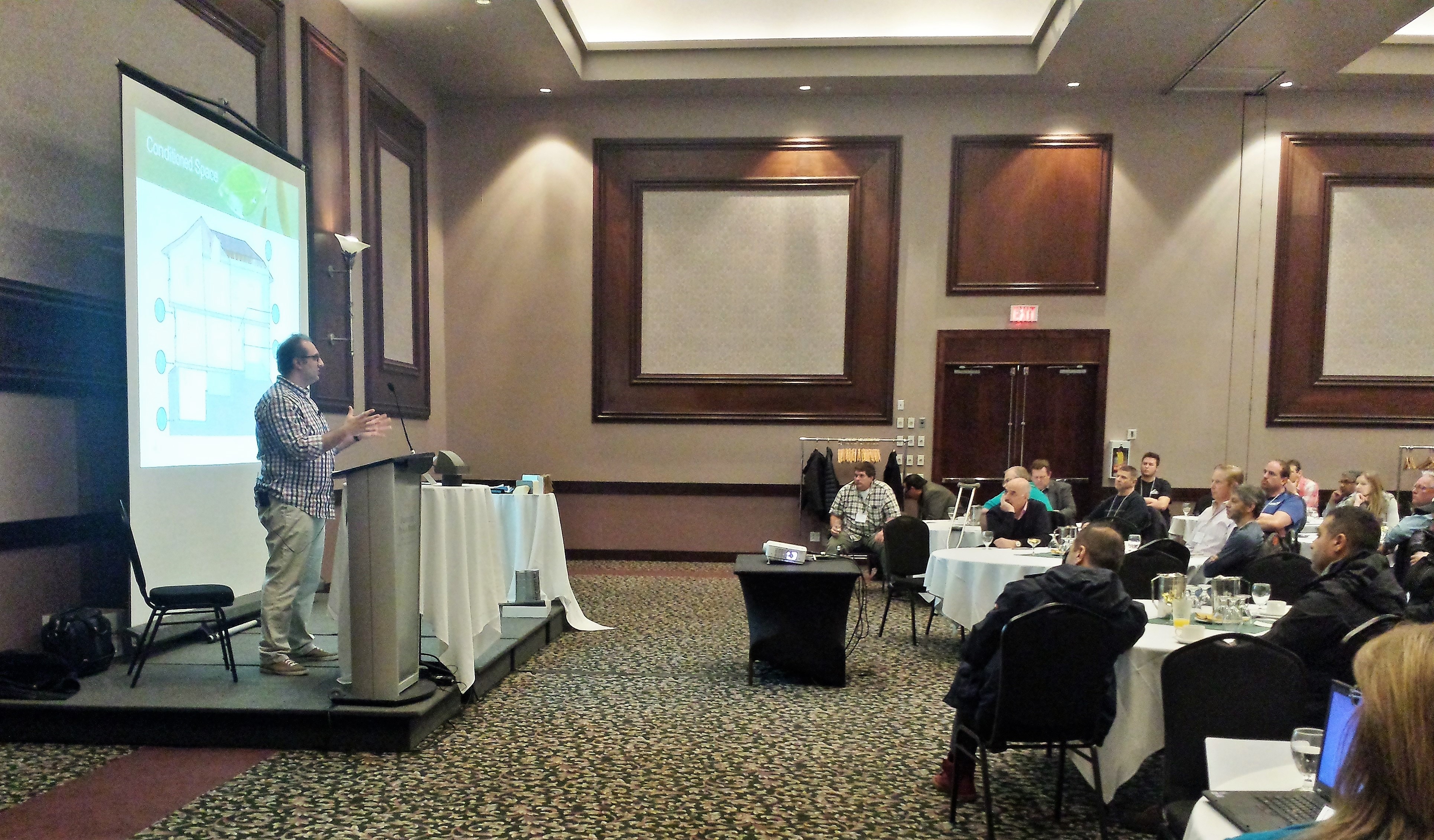Hamid Heidarali from HDB, has been invited by FortisBC to give presentations at several FortisBC Trade Ally Network since September 2016, held in various cities in British Columbia. Hamid’s talk at these events has been focused on “The interaction between the building envelope, and Heating, Ventilation, and Air Conditioning (HVAC) systems”, and the importance of proper coordination of the overlap between these two disciplines. The participants comprised of mechanical/electrical contractors, builders, and developers.

The presentation pointed out that, although building envelope and the HVAC are two separate disciplines, there are quite a noticeable overlap between the two. Experience has shown that in the absence of an effective coordination between these two disciplines, there can be the risk of compromised performance of the building envelope (rain presentation, condensation, heat loss/gain), as well as compromised performance of the HVAC systems (occupant’s thermal discomfort, poor indoor air quality, etc.).
An interactive and collaborative approach was utilized in these presentations, supported by a wide range of real and interesting case studies, photographs, 3D drawings, and material and assembly samples. In addition, various brainstorming sessions were incorporated during the presentations, resulting in a vibrant and engaging learning experience for the audience.
This presentation format has been receiving a wide range of positive feedback from the participants, as well as FortisBC. Based on the received feedback, the key message of the presentation resonated with the participants; and they managed to develop a practical insight towards the importance of an effective coordination measures between the building envelope and HVAC disciplines.
So far, the presentation has been delivered in Kelowna, British Columbia on September 15, 2016, and in Coquitlam, British Columbia on March 1, 2017. Upcoming presentations are scheduled for Nanaimo, British Columbia on March 16, 2017, and Kamloops, British Columbia on April 6, 2017.

The following topics were covered:
- Overlap between building envelope and HVAC disciplines
- Examples of performance problems due to lack of coordination of the overlap
- Required coordination measures, along with practical solutions, to effectively address the overlap between the two disciplines
- Optimal location of HVAC systems in relation to the building envelope
- Conditioned versus unconditioned spaces, and the associated implications on building envelope and HVAC design
- Effective airtightness and waterproofing measures around HVAC penetrations through the building envelope
- New section 9.36 BC Building Code energy efficiency requirements, and their impact on the overlap of scope between the two disciplines
- Window condensation, and its relation to the overlap between the two disciplines
- Increased airtightness of the building envelope, and its impact on the ventilation efficiency
- Excess summer heat gain, and the associated occupant discomfort
- Summer condensation on HVAC ducts/pipes in unconditioned attics and how to avoid it
